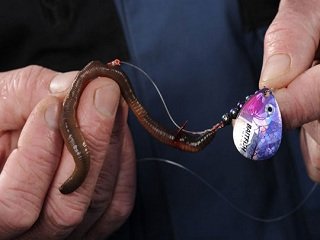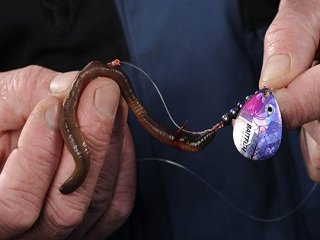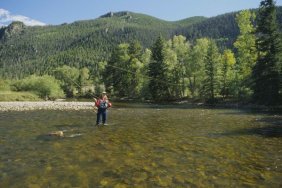 There are hundreds of thousands of lures available on the market today that will catch walleye. This is not an exaggeration. There’s a reason for this, though; each one has its own place on the water when it comes to catching fish. However, even with such a myriad of lures from which to choose, it’s hard to beat live bait. There are several ways to utilize live bait when angling for walleye, but today I wanted to detail a few ways to troll for them using live bait.
There are hundreds of thousands of lures available on the market today that will catch walleye. This is not an exaggeration. There’s a reason for this, though; each one has its own place on the water when it comes to catching fish. However, even with such a myriad of lures from which to choose, it’s hard to beat live bait. There are several ways to utilize live bait when angling for walleye, but today I wanted to detail a few ways to troll for them using live bait.
One of the most common ways to rig live bait for walleye is conveniently one of the easiest ways, as well: the Lindy rig. Here, there’s a hook, a length of line, a swivel, a stop, a bead, and a sinker. You can also find pre-made rigs that are comprised of fluorocarbon leader and possess colored hooks designed specifically to function with the Lindy rig. 6-pound test monofilament (though, 8-pound is fine, too) is what most anglers go with when they use a Lindy rig, as anyone who’s fished for walleye will tell you to go with the lightest line you can get away with. Soft tipped, fast action spinning rods are the way to go with the Lindy rig. Most anglers will troll with a Lindy rig with the bail open, feeding line into the water once there is a bite. After a few moments, then they tighten the line and set the hook.
Another popular trolling technique, when seeking out walleye, is bottom bouncing. Utilizing a bottom bouncer will allow you to move a little faster and cover more ground by getting the bait right in front of the fish. The setup for bottom bouncing is quite simple: tie on a bottom bouncer (Northland makes great bouncers) and then attach a spinner to it. Let it drop to the bottom and wait for a strike. You’ll need to alter the setup by shortening the snell a bit if you’re fishing heavily structure waters, or around a lot of rocks. This will reduce the chance of snagging your line. Bottom bouncers are designed to, well, bounce along the bottom, but you’ll also want to keep an eye on your electronics to see where the fish are holding. For example, if you see fish situated a few feet off the bottom, then I’d suggest lifting the bottom bouncer a few feet while trolling. Medium action rods around 7 feet in length are ideal for bottom bouncer rigs because they have enough backbone to provide strength, but still offer the necessary amount of sensitivity for walleye fishing. For line, I’d go with 8 to 10-pound test.
As with most tactics on the water, patience is rewarded with fish. It can take time to figure out the right depth, location, and speed when trolling for walleye. Experiment until you find what works and then reap the results. These are only a few trolling techniques that work, but their consistency and effectiveness can’t be argued, and have made them popular among walleye anglers for years. Give them a try the next time you drop a line in the water for walleye!








